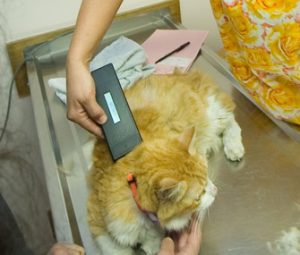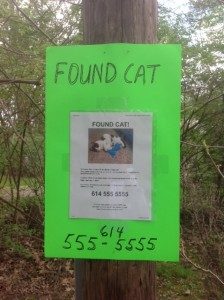Archives
- September 2020
- August 2020
- July 2020
- June 2020
- May 2020
- April 2020
- March 2020
- February 2020
- January 2020
- December 2019
- November 2019
- October 2019
- September 2019
- August 2019
- July 2019
- June 2019
- May 2019
- April 2019
- March 2019
- January 2019
- December 2018
- November 2018
- October 2018
- September 2018
- August 2018
- July 2018
- June 2018
- May 2018
- April 2018
- March 2018
- February 2018
- January 2018
- December 2017
- November 2017
- October 2017
- September 2017
- August 2017
- July 2017
- June 2017
- May 2017
- April 2017
- March 2017
- February 2017
- January 2017
- December 2016
- November 2016
- October 2016
- September 2016
- August 2016
- July 2016
- June 2016
- May 2016
- April 2016
- March 2016
- February 2016
- January 2016
- December 2015
- November 2015
- October 2015
- September 2015
- August 2015
- July 2015
- June 2015
- May 2015
- April 2015
- March 2015
- February 2015
- January 2015
- December 2014
- November 2014
- October 2014
- September 2014
- August 2014
- July 2014
- June 2014
- May 2014
- April 2014
- March 2014
- February 2014
- January 2014
- December 2013
- November 2013
- October 2013
- September 2013
- August 2013
- July 2013
- June 2013
- May 2013
- April 2013
- March 2013
- February 2013
- January 2013
- December 2012
- November 2012
- October 2012
- September 2012
- August 2012
- July 2012
- May 2012
- April 2012
- March 2012
- February 2012
- January 2012
- December 2011
- November 2011
- October 2011
- September 2011
- August 2011
- July 2011
- May 2011
- April 2011
- March 2011
- January 2011
- December 2010
- November 2010
- October 2010
- September 2010
- August 2010
- July 2010
- June 2010
- May 2010
- April 2010
- March 2010
- February 2010
- January 2010
- November 2009
- October 2009
- September 2009
- August 2009
- July 2009
- June 2009
- December 2008
- November 2008
- September 2008
- June 2008
- August 2006
- September 2005
- August 2005
-
If you Find a Cat
Comments Off on If you Find a CatWhat To Do If You’ve Found A Cat
If you have found a cat, you have some decisions to make. Does the cat really need help? How can you help find his/her family? Is the cat an outdoor-access pet who lives in your neighborhood? Could this be a lost cat? A stray or barn cat? A feral cat? How do you know?
Short version: If cat is not in danger, leave it alone. Try to find out if someone is searching for the cat. Take a photo of the cat and post on Cat Finders: Lost/Found Cats in NH | Facebook
Fill out a FOUND CAT report with your nearest shelter and notify Animal Control or police. If possible, get the cat scanned for a chip. Ask neighbors if they know the cat, and if possible, use a Communication Collar. See details and discussion below.
First, try to determine if the cat is in distress.
Is the cat injured, emaciated, ill, or in a very dangerous spot (such as on a highway)? If so, do what you can to rescue the cat, or if it is not safe to do so, call the police, animal control, or the nearest animal shelter or rescue for help with trapping and rescue. Do not chase a cat, particularly if the cat is in a dangerous area, as the cat might run into oncoming traffic or other dangers. Rather, try coaxing the cat to you, or stopping traffic (if safe) so that the cat can get across.If it is bitter cold outside, or there is a storm, and the cat appears to be seeking refuge, and if you are able to take the cat inside temporarily, you might be saving the cat from a fearful and possibly dangerous situation. If you do take a cat inside, then you want to let him or her out again once the storm is over, and make every effort to find out where the cat belongs. Remember, if this is an outdoor-access cat, his/her family will be especially worried if the cat is missing during a storm.
If the cat is NOT in obvious distress, leave the cat alone. If the cat is wearing a collar, check the inside and outside of the collar for a phone number or other contact information. The cat may be an outdoor-access cat who belongs to one of your neighbors. Allow the cat to go home. If you feed the cat, the cat will keep coming back, but that does NOT necessarily mean the cat is homeless or even hungry. (Always offer the cat some water though; a cat outside can quickly become dehydrated.) So before feeding an unknown cat, it’s a good idea to try and find out from your neighbors if they know where the cat belongs. Please do not take somebody’s outdoor-access cat! Please do not create a lost cat by keeping or re-homing somebody’s pet!Check Cat Finders: Lost/Found Cats in NH | Facebook and other missing pet sites and community Facebook pages to see if someone is searching for this cat. If this cat DOES appear to be a missing one, and you can lure the cat into your home for safekeeping, then please try to do so, and then contact the owner.
(Never let a stranger come to your home while you are by yourself, though. Be sure to have a friend or family member with you if the owner is coming to pick up the cat.)
If you are unable to lure the cat with food or treats, do not chase or try to grab the cat. This could result in a bad bite or scratch, and then the cat may run off again. Instead, simply contact the owner, who can then come and verify that this is their cat. If you can keep the cat busy eating some dry cat food or drinking some water, that may keep the cat close until the owner shows up.
If you do not see any posts on Facebook or other social media, and you don’t see lost cat posters for the cat along the roads, then you can post the cat as FOUND on Cat Finders’s Facebook group, and on community Facebook pages/groups, and NH Lost& Found Pets on Facebook. Maybe the family just doesn’t realize their cat is really missing, and are waiting for him or her to come home as usual. Also, the cat might not actually be missing, but might simply be visiting you, then going home. Some outdoor-access cats may occasionally stay out for a night or two without their family becoming concerned or reporting them as missing.
What if someone claims you have their missing cat, but you are not sure it really is their cat? If someone notifies you that the cat you’ve posted as “found” is their lost cat, remember, Safety First! You are well within your rights to ask them to send you an email or PM with photos of them with the cat or a copy of their adoption papers/rabies certificate. Some unscrupulous people may want to get a free cat rather than paying an adoption fee, and may not have good motives; in other words, they might not want the cat as a pet, but for some other, unkind purpose.
Again, don’t allow strangers to come to your home if you are by yourself, but instead, plan to have a spouse or other adult at home with you. If you feel uncomfortable having the possible owner come to your home, and if you are able to transport the cat, you can arrange to meet the possible owners at the nearest animal shelter or police station. The true owner would be happy to meet you there. A scammer or pet trafficker, on the other hand, would be less likely to want to pursue the matter.
If you can’t find the cat listed as missing, and nobody responds to your FOUND cat post after a few days, you have some decisions to make. Is the cat homeless, stray, feral, or has the cat been missing for so long that the family has reluctantly given up actively searching? If only the cat could tell us!
Try to determine if the cat is coming and going, or if the cat appears to be living on your property. You may be able to notice if the cat is spending the night in your barn or under your shed, or if you only see the cat at certain times of the day. If the cat is living on your property, he or she might be a lost cat, a stray, or a community cat (feral or barn cat) and may need some help. If the cat is coming and going, he or she may have a perfectly good home and is just coming to visit.
Is the cat tame, or feral? If the cat is tame, that is, if the cat will come to you, meow for food, and possibly even allow you to pet him or her, chances are this is a family pet. If not, the cat might be a pet, but might be shy or afraid of strangers. Usually, even a shy pet can be coaxed to come for food while you are nearby. A feral cat will usually not come to eat until you are at a safe distance, at least until the cat begins to trust you.
If the cat is tame, and you think the cat may be coming and going (as opposed to living on your property 24 hours a day) this may simply be an outdoor-access cat who comes to visit you. To help determine if this is the case, you can try making a paper communication collar.
A communication collar is just a thin strip of paper that you write a message on, (such as, Is this your cat? Please call me (and write your phone number). Then put it around the cat’s neck, and tape the ends together. Make sure that the collar is not too tight (you should be able to fit one or two fingers underneath without tearing the collar) and not loose enough to come off easily. If the cat comes back without the collar, try it again. The cat may have gotten the collar off & his/her family haven’t seen it. Keep trying. If the cat already has a flea collar, or other collar, you can attach a message to the existing collar with some masking tape.But if the cat keeps coming back and still has your collar on, and nobody has written you a message on it, chances are this is a lost or stray cat, not an outdoor-access cat. Of course, there are circumstances under which this might still be a family pet that lives in the neighborhood. For instance, the family may be out of town, the cat comes and goes through a cat door, and a pet sitter comes by and puts food in the cat dish once a day. But in most cases, a family member would notice if their cat came home with an unfamiliar collar.
Is the cat tame enough for you to get the cat scanned for a microchip? Any vet or shelter can scan the cat to see if he/she has a microchip that will help find the cat’s family. You would not have to surrender the cat to a shelter (though if the cat is injured or ill, it might be a good idea). Sometimes cat rescues or shelters have volunteers who are willing to come to your house and scan the cat for you.
Fill out a Found Cat report at your local shelter, and notify your town’s Animal Control Officer (or police). They may know if anyone has already reported the cat as missing, but if not, at least you can make sure they have a record of the cat in case anyone reports the cat missing later on. Many people don’t report their cat as missing right away, thinking the cat will eventually just come home on his own.If you decide to bring the cat to a shelter, ALWAYS BRING THE CAT TO THE SHELTER NEAREST THE PLACE WHERE YOU FOUND THE CAT! That is where the owner will look for their cat. If you bring the cat to a shelter in a neighboring town then the cat may get adopted before the owner learns where their cat was taken. Most people only check the shelter nearest their home!
Whether the cat seems tame or not, please do not take a cat off the street without notifying your neighbors. You can take a photo of the cat and make some inexpensive flyers or posters to put around your neighborhood, and post the cat online to Cat Finders’ Facebook group, at: https://www.facebook.com/groups/CatFinders/
It would also be very helpful to post the cat on other lost/found pet sites (see Links page) and especially to your community or town Facebook pages or groups. Always try to leave at least one piece of information about the cat private, so that you can screen anyone who claims to be the owner. For example, if the cat has white paws, but the paws don’t show up in the photo, the real owner could tell you over the phone that their cat has white paws, but a pet trafficker who is merely trying to get a free cat wouldn’t know what color the paws are.
Check craigslist to see if the cat is posted as missing (but Cat Finders does not recommend posting there yourself as it invites scammers to contact you). The cat might not live on your street, but might live a few blocks or a mile away, and might have a family searching for him/her. Also look for posters/flyers that the cat’s family may have posted.
Remember that it is possible this cat has been missing for months, and the family may have already given up hope, so may no longer be actively searching for a cat they believe they will never find. But if they see your poster, imagine how happy they would be! See Cat Finders’ Posters page to see examples of effective posters.
If the cat is not tame, and you haven’t been able to find the cat’s family with your posters and online listings, what can you do? If the cat seems fearful of humans, this may be a shy pet, or a barn cat or a feral cat. If the cat seems all right, and just needs some food and water, and you are willing to set up a shelter of some sort for the cat, you don’t necessarily have to do anything. You can, if you wish, call a rescue or shelter that does TNR (Trap, Neuter, Release) to help you get the cat neutered and vetted. If the cat has one ear that has the tip cut off, that means the cat has already been neutered and vetted by a rescue group. Please do not trap a possibly feral cat and bring him/her to a shelter unless you know for sure that your shelter has a feral cat barn program. Some shelters still euthanize feral cats.
Here are some easy outdoor shelters you can make, and some you can buy, to help keep neighborhood cats alive:
Cole and Marmalade’s easy Rubbermaid cat shelter: https://youtu.be/lpW69fNzcjc
Outdoor Cat Shelter Options | Insulated & Heated Feral Cat House Ideas (alleycat.org)Thank you for helping to reunite a lost cat with his/her family, or for helping a cat in need.
© All content copyrighted to Cat Finders






